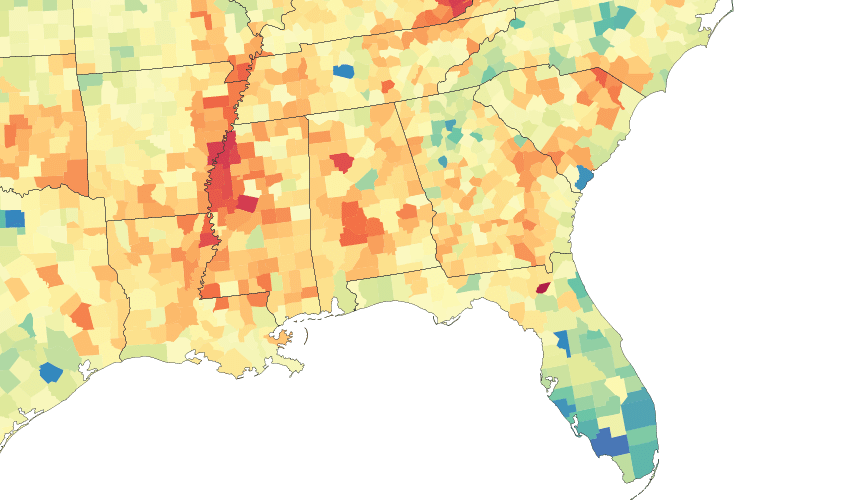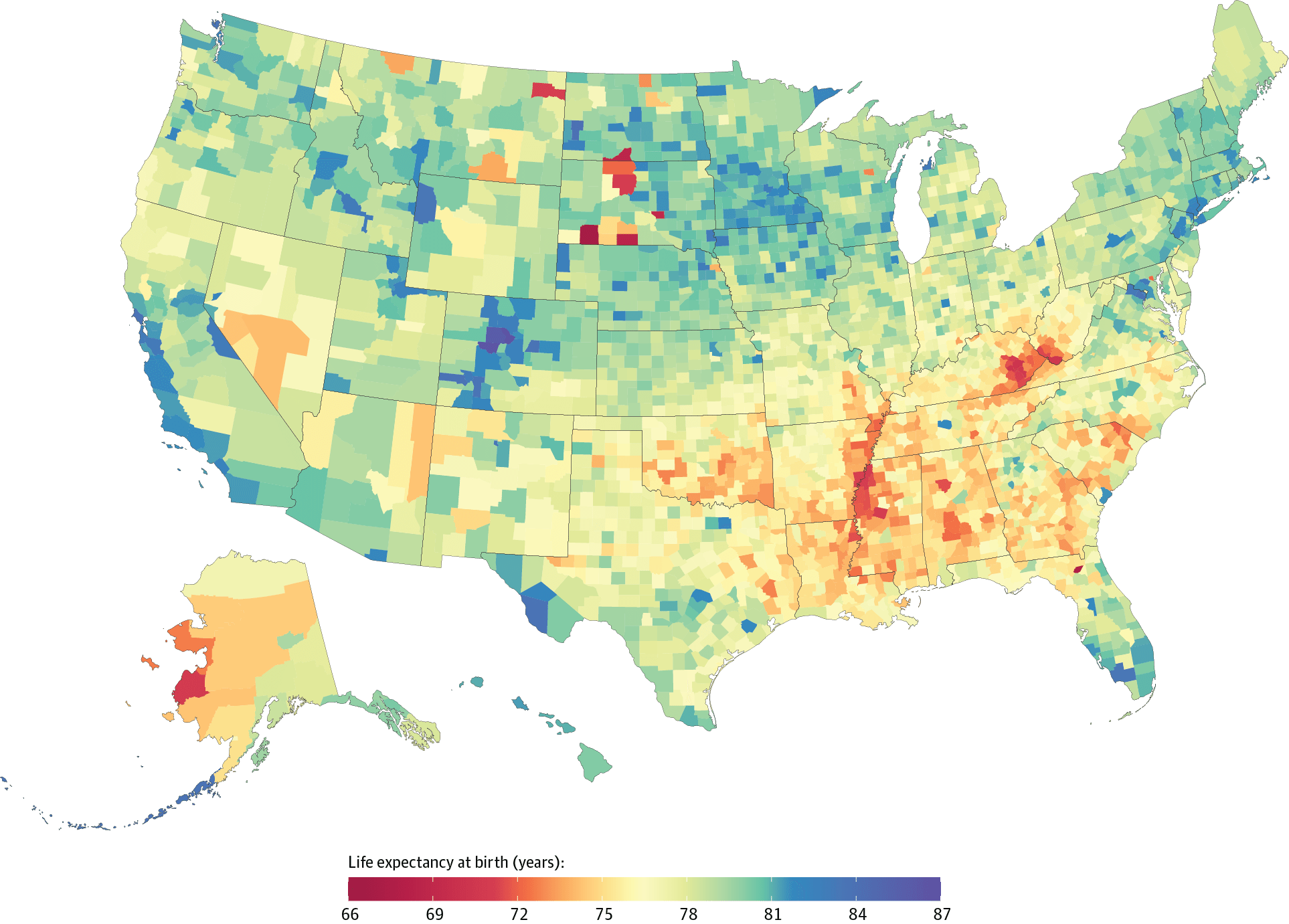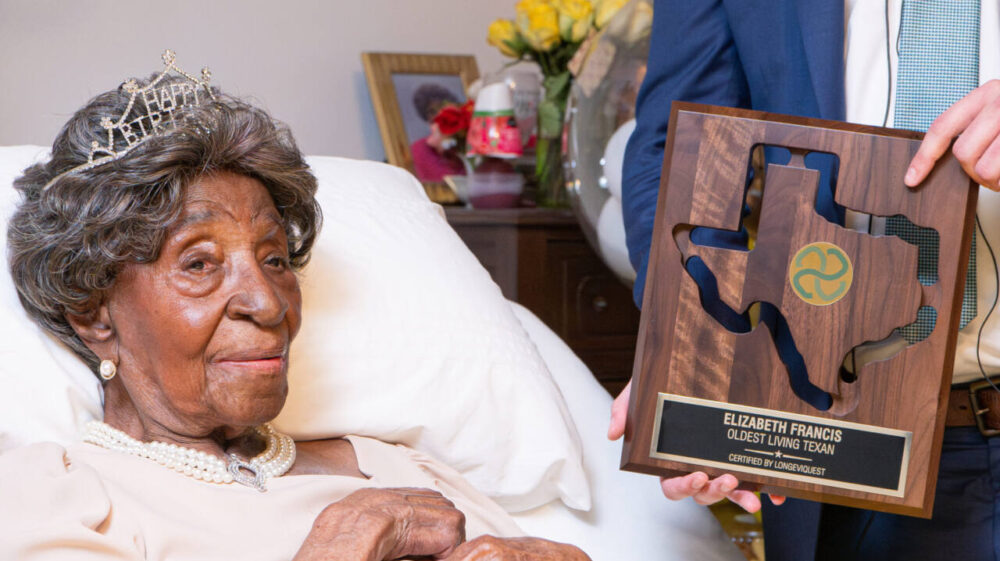New research shows disparities in life expectancy across the U.S.
This isn’t meant to be a morbid guessing game. But new data shows it can be easy to guess someone’s life expectancy—especially if you know where they were born.
This new research, which was released by the Institute for Health Metrics and Evaluation (IHME) and analyzed by JAMA Internal Medicine, shows a huge disparity in life expectancy across the United States. Overall, life expectancy is up for both men and woman, with people across the country living for an average of 79 years.
That being said, some people in the U.S. are likely to live about 20 years longer than others because of the economic and health factors that influence them from birth. For example, people from some areas (like one county in Colorado) are expected to live until the ripe old age of 87, while others (like some in the Dakotas)—just 66 years old.
The data on this map is from 1980 to 2014. Researchers hope that by tracking the factors surrounding death and the age at which people die, they can shed light on how to reduce the number of preventable deaths in specific environments.
The Shocking Disparities
A handful of counties in South Dakota, North Dakota, Kentucky, Mississippi and West Virginia have a very low life expectancy compared to other counties. The disparities have little to do with individual states. North Dakota, for example, has one county in the lowest life expectancy range (66-72). But there are several counties where residents are expected to live much longer (81-87).
If you’re looking to make a move, counties in central Colorado have the highest life expectancy.
Factors Influencing Disparities
Three main risk factors influence the huge difference in life expectancy in varying counties:
- Socioeconomic and race/ethnicity (60%)
- Behavioral and metabolic (74%)
- Health care (27%)
Combined, these factors account for 74 percent of the variations across the country. That means poverty, obesity, access to health care and behaviors like smoking are the driving factors as to why some people die at a younger age. The gap is also widening at a much faster pace than decades past.
The Ultimate Goals Of This Research
The JAMA Network says tracking inequality at the county level helps to target necessary resources in specific areas and to implement new policies to achieve new goals.
Researchers specifically point out the Healthy People 2020 initiative launched by the Department of Health and Human Services. The overreaching goals are preventing diseases, eliminating disparities, creating environments that promote good health for all and promoting quality of life across all life stages.
According to researchers, understanding the stark difference in longevity is a positive step toward reaching these nationwide goals.
[h/t Business Insider]







